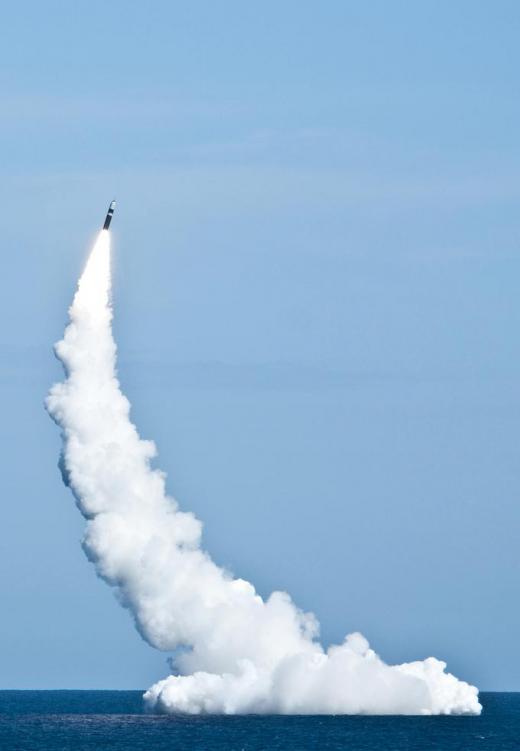What is the Difference Between Supersonic and Hypersonic?
 Michael Anissimov
Michael Anissimov
Simply put, hypersonic is considered to be above Mach 5 (five times the speed of sound), while supersonic is merely above Mach 1. The difference is one of degree, relating to certain dynamics of the airflow, but the supersonic/hypersonic distinction also has relevance to the defense world of the near future, in which aerospace companies must compete to give the armies of their home countries the fastest possible bombers and fighter planes. Methods of propulsion also differ greatly between the supersonic and hypersonic regimes, with air-breathing, or ramjet, designs more popular for increased speeds.
Hypersonic is one of three rough classifications for airflow regimes - subsonic (less than Mach 0.8), transonic (Mach 0.8 - 1.2), supersonic (Mach 1.2 - 5.0), and finally hypersonic (Mach 5.0+). By comparison, a Space Shuttle in orbit travels at about Mach 23. The fastest conventional planes, such as the SR-71 Blackbird, reach flight speeds of about Mach 3.2. Scramjets, of which there has been only a few successful demonstrations thus far, combust fuel using a supersonic intake valve, reaching speeds around Mach 7. Successful hypersonic flights have been conducted by NASA with the Boeing X-43, and by the University of Queensland's Centre for Hypersonics in a project called HyShot. In its most recent test, HyShot reached Mach 8.

The US military has numerous plans in development for additional hypersonic aircraft, including the Hypersonic Cruise Vehicle (HCV), also known as the HyperSoar, a bomber with a planned flight speed of Mach 10, a prototype of which could be built as early as 2010. The object of this plane would be to strike anywhere in the world within 2 hours. It could carry a smaller payload than conventional bombers, because of the massive kinetic destructive capability entailed in a bomb moving horizontally at Mach 10. This system could be combined with glider-assisted bombing for an even faster strike.

HyperSoar would be a welcome alternative to the modified Trident missiles with a non-nuclear payload being considered by the US military, which are dangerous because it would be impossible for foreign countries to distinguish between a nuclear Trident and a non-nuclear Trident until it struck, possibly provoking a full-scale nuclear counterattack.
AS FEATURED ON:
AS FEATURED ON:












Discussion Comments
Has the HyperSoar been put into production yet? A bomber that can reach mach 10 -- that's almost inconceivable, isn't it?
Post your comments